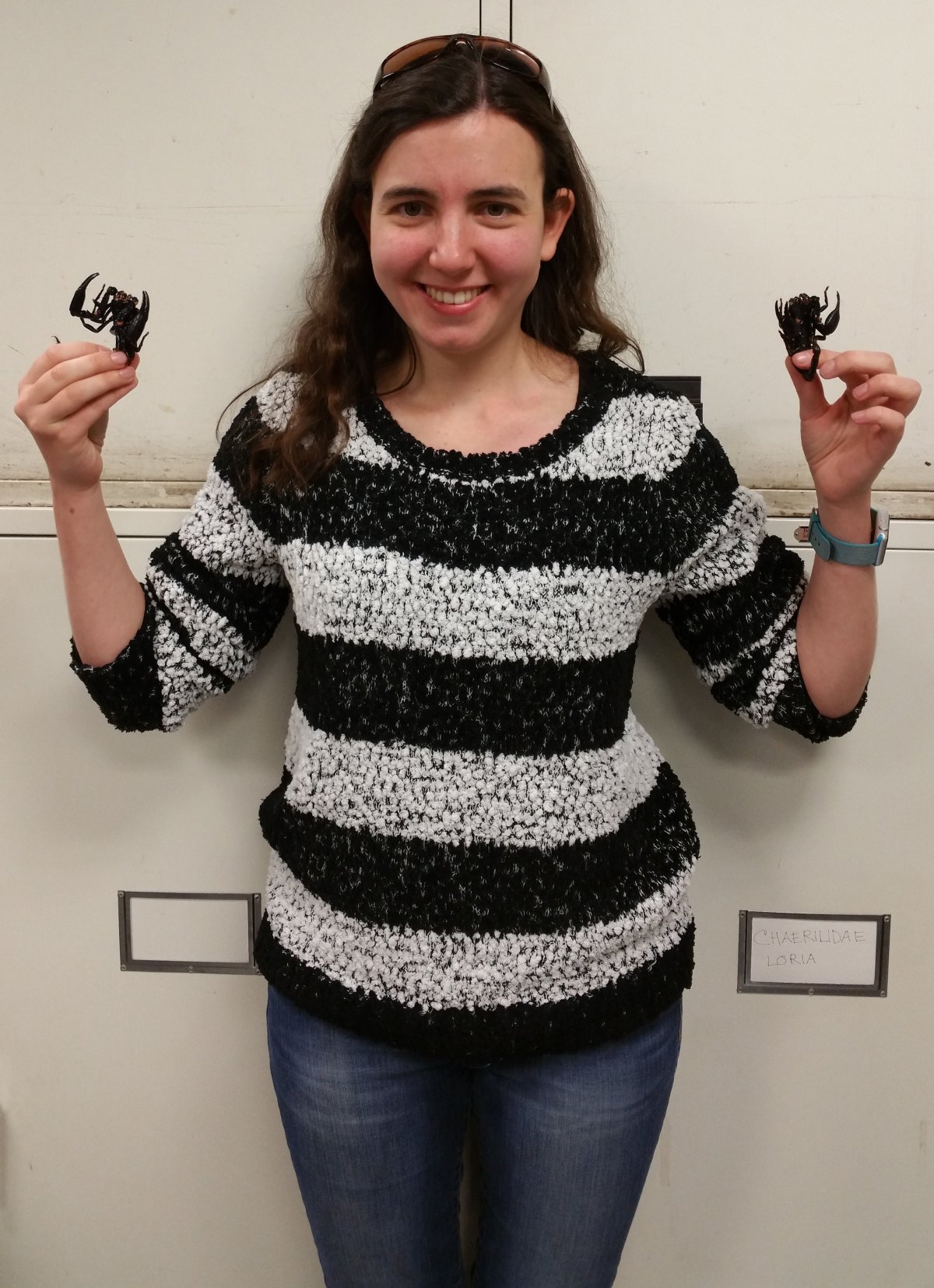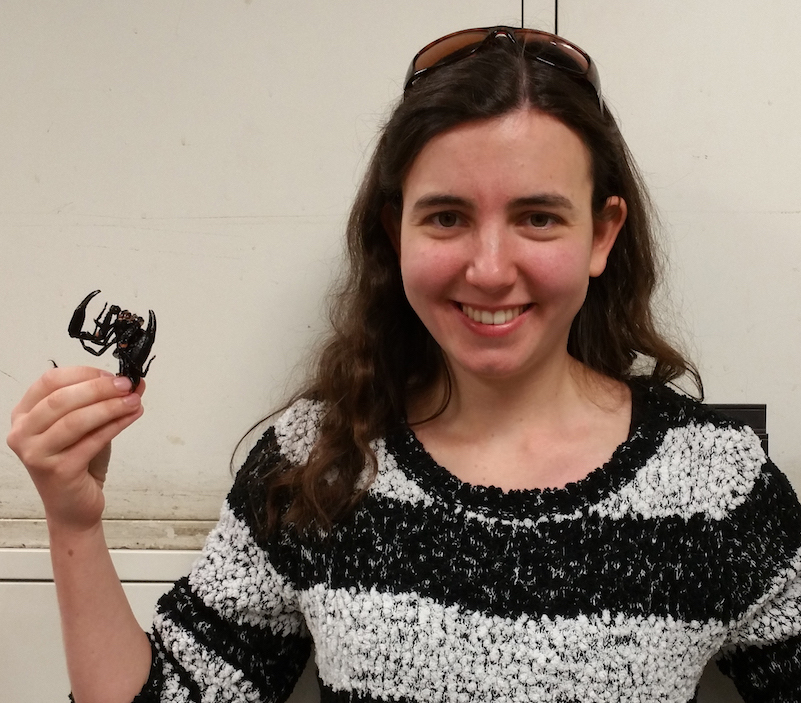BY LENORE SKENAZY | Stephanie Loria would like to set the record straight: “If you get stung by a scorpion and you are a healthy adult, you won’t die.” She paused, then added, “You may wish you were dead. But they get such a bad rap.”
Yes, pity the poor scorpions — so misunderstood. Fortunately, the species has Loria on its side. A native of Glendale, Queens, and graduate of New York’s Catholic school system, she is perhaps the city’s only scorpion apologist. She loves the creatures, researches them, and this fall she got her Ph.D. in scorpion studies from the American Museum of Natural History’s Richard Guilder Graduate School. Other grads included a frog researcher, a bat specialist getting an honorary degree, and a guy who has identified 70 new species of wasps.

Not sure I’d want to be at their Christmas party. But having never seen an actual scorpion — or scorpion researcher — I did want to meet Loria. So the other day I went to the museum and was escorted past dozens of dinosaur-demanding school groups, up to the restricted fifth floor, past hundreds of lockers housing insect specimens, and then through a hall lined with clear plastic boxes containing — OMG!
Tarantulas. Live tarantulas, the size of chipmunks, waving their furry legs.
How did “Night at the Museum” miss these guys?
One floor up I found Loria in her lab, scorpions at her side — dead.
“We have some live stuff downstairs, but those are more like pets,” she said. “These I actually collected during my trips to Southeast Asia.”
And how does one collect a scorpion? Well, said Loria, cheerful as a flight attendant, you just have to go into the jungle at night. Scorpions are black, so you can’t see them except by using an ultraviolet flashlight, but then they phosphoresce like Jimi Hendrix posters.
They also shed their exoskeletons. So you look for glowing bits of dead scorpion on the trail leading you to a live one, and then, using foot-long tweezers, you try to grab it as fast as you can before it scurries into its borrow.
At that point, said Loria, you often have “moths swarming around your face and you’re swallowing them, and sometimes you’re also near ants, and you’re covered with them, and some of them are pretty nasty.” Long story short, if you don’t manage to grab the scorpion with the tweezers, sometimes you just dig them out.
That’s right: You stick your hands into a scorpion den hoping you’ll find some.
One time, Loria recalled, she and her adviser were on a nighttime hunt in the Malaysian jungle when suddenly, a scorpion stung him.
“Two of his fingers were paralyzed and he had a burning sensation moving up his arm and into his chest,” said Loria. “It was just me and him in the middle of nowhere.”
Then what happened?
“He took an antihistamine,” she said. By the morning, he was fine.
After an agonizing night.
Loria won’t let this prejudice you against scorpions. There are 2,200 species of them, she noted, and only 45 have poisonous venom. What’s more, they can live up to 25 years, and are members of the arachnid family, like spiders, but less popular. At arachnid conventions (I know, I know), “85 to 95 percent of the talks are about spiders,” said Loria, bummed. Scorpions get no respect. And yet, they have been around since before the dinosaurs.
In her own prehistory, Loria grew up digging millipedes and centipedes out of her backyard and bringing them inside, to her parents non-delight. She had an ant farm, a moth farm and a grammar school teacher who showed her rubber replicas of bugs and encouraged her curiosity. One time, Loria wore a dead cicada’s shell on her nose to freak out her schoolmates.
It worked.
But Loria wasn’t really trying to disgust anyone. She was just fascinated by the “behind the scenes” work that insects and arachnids do.
“If you watch any nature shows on TV, it’s always about big cats, or other mammals we relate to,” she offered. But the real heroes, she said, are the smaller creatures we rely on. Bees pollinate. Millipedes play a role in decomposing. Spiders and scorpions keep the insect population down.
By high school, she was taking after-school classes at the museum and did an internship studying flamingo behavior.
Now that she has her Ph.D., she is heading to San Fran to start studying the evolution of scorpion venom. Her future looks so bright, she has to pinch herself.
Before anything else does.
Skenazy is a keynote speaker, founder of the book and blog “Free-Range Kids,” and a contributor at Reason.com


















